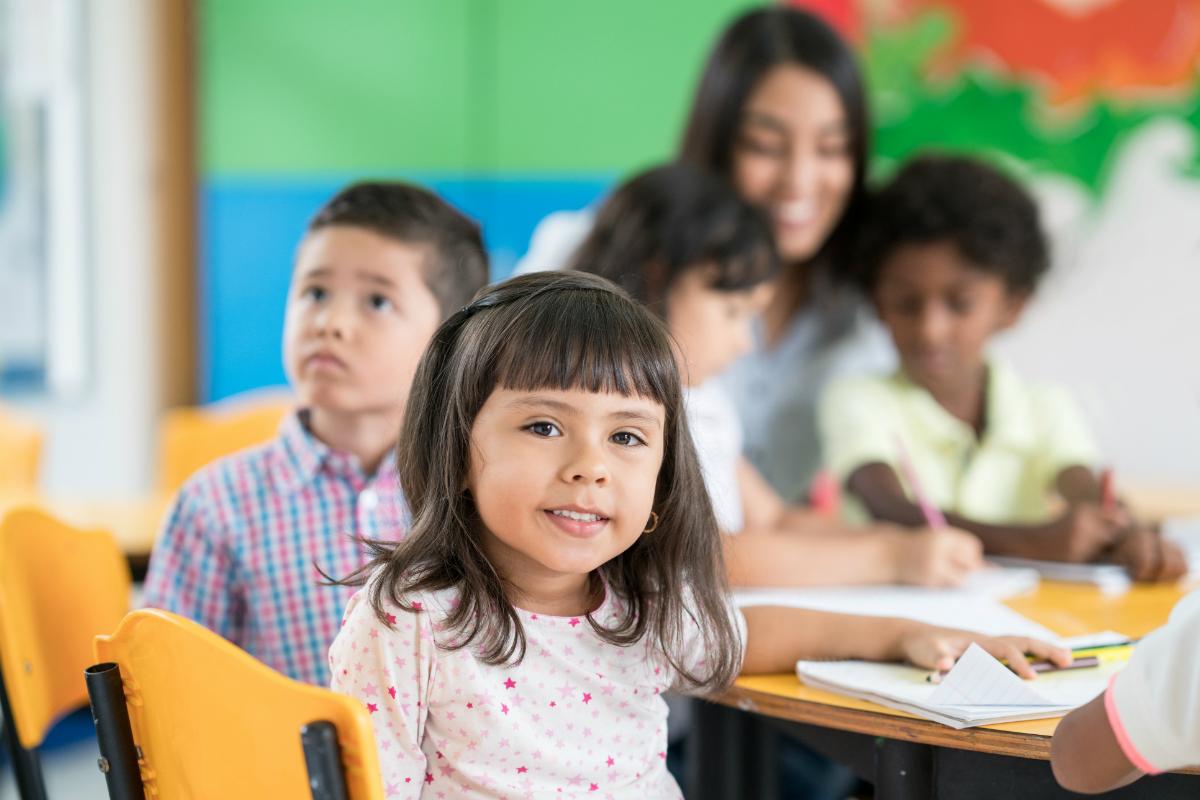Of the 6.2 million children in California’s K-12 public education system, 3.3 million are Latino. That number is higher than every other state’s student population, excluding Texas. In addition to making up the majority of California’s K-12 school population, Latinos are also the fastest growing ethnic group in the state. Despite this group’s prevalence, Latinos have faced a long history of discrimination in education. A recent report from Education Trust-West found that while some outcomes have improved for Latino students, they still face a variety of hurdles in California’s public education system.
The report, “The Majority Report: Supporting the Success of Latino Students in California,” outlines what education looks like for Latino students and how advocates can work toward gaining educational equity for this group. Here are some highlights:
Opportunity and Achievement Gaps
The report pertains to Latino students from the Pre-K to college level. The following are a few examples of the obstacles Latino students must overcome to access a quality education:
- Many Latino students under the age of five do not have enough affordable and/or Spanish language-friendly preschool options, making them less likely to attend preschool than white, Asian or African-American children.
- As compared to their white peers, Latino students are also more likely to enter segregated K-12 schools that have less effective teachers and less opportunities for enriching academic coursework including arts education classes and the courses needed to complete University of California and California State University A-G requirements.
- Latino students encounter implicit and explicit bias from teachers and counselors, which can lead to over-identification for special education and under-identification for gifted and talented education, among other major issues.
- 2016–17 Smarter Balanced assessment scores show that less than one-third of Latino third-graders met or exceeded English language arts standards. One in five Latinos do not pass Algebra I in middle school. Additionally, one in five Latinos do not graduate with their high school class, and, of graduating high school seniors, only a third complete UC and CSU A-G requirements.
- More than half of Latino students report that they feel disconnected from their schools. Many Latino students do not feel that they receive fair treatment at school and do not feel happy or safe at school.
- Latino parents may face additional barriers, such as a lack of knowledge about the American public school system or the need for translation services, when trying to engage with their child’s education.
Recommended Practices
The report recommends a variety of actions that can help reverse these troubling trends. These include, but are not limited to, the following:
- Expand access to preschool and ensure that there are enough quality programs, including bilingual options, for low-income children
- Eliminate tracking — the practice of placing students in different levels of classes according to perceived ability
- Provide extended learning time so that students have additional opportunities to master academic content outside of the traditional school schedule, including during the summer, before school and after school
- Require ongoing bias training that helps educators observe, acknowledge and mitigate their own explicit and implicit biases
- Implement restorative justice practices and other alternative forms of discipline that shift the focus from punishment to repairing harm
- Attract a diverse teacher workforce through teacher preparation programs, including alternative teaching pathways
- Provide “wraparound” supports — health, social, legal, financial or other nonacademic assistance
- Streamline remediation so that students can more quickly access credit-bearing, college-level coursework
The entire report from Education Trust-West can be found here.
CSBA Resources
Latino Students in California’s K-12 Public Schools CSBA Fact Sheet
CSBA English Learners Governance Briefs
CELA Toolkit for Undocumented Students and Families





